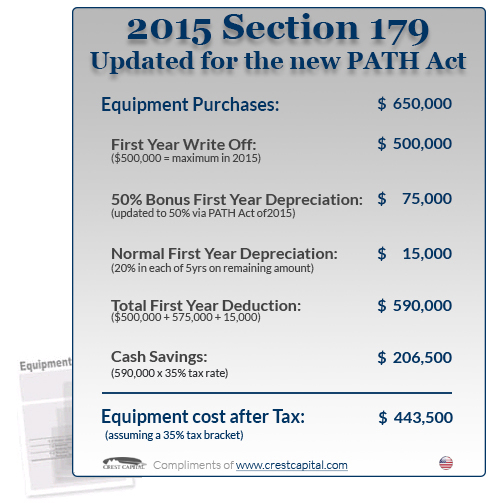Section 179 details
This deduction is good on new and used equipment, as well as off-the-shelf software. This limit is only good for 2015, and the equipment must be financed/purchased and put into service by the end of the day, 12/31/2015.
This is the maximum amount that can be spent on equipment before the Section 179 Deduction available to your company begins to be reduced on a dollar for dollar basis. This spending cap makes Section 179 a true "small business tax incentive".
Bonus Depreciation is generally taken after the Section 179 Spending Cap is reached. Note: Bonus Depreciation is available for new equipment only.

You can elect to treat certain qualified real property you placed in service as section 179 property for tax years tax years beginning before 2015. If this election is made, the term “section 179 property” will include any qualified real property that is:
- Qualified leasehold improvement property,
- Qualified restaurant property, or
- Qualified retail improvement property.
- A transaction to which section 381(a) applies,
- A mere change in the form of conducting the trade or business so long as the property is retained in the trade or business as qualified leasehold improvement property and the taxpayer retains a substantial interest in the trade or business,
- A like-kind exchange, involuntary conversion, or re-acquisition of real property to the extent that the basis in the property represents the carryover basis, or
- Certain nonrecognition transactions to the extent that your basis in the property is determined by reference to the transferor’s or distributor’s basis in the property. Examples include the following.
- A complete liquidation of a subsidiary.
- A transfer to a corporation controlled by the transferor.
- An exchange of property by a corporation solely for stock or securities in another corporation in a reorganization.

